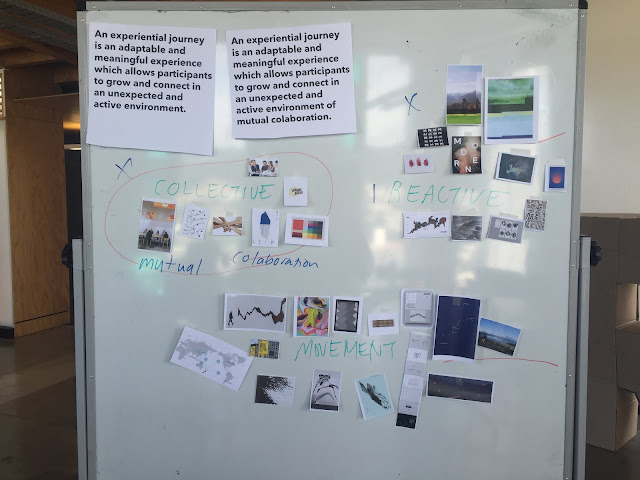We started the process of writing the essence statement by brainstorming various words/emotions and feelings which we associated with 'journey' and experiential journey.
From there, we turned the key words from these into our ethos statement. Our statement went through many iterations.
After this we individually found imagery which we felt fit with our idea of the Experiential Journey. We then matched the imagery with some of our key words.



From here we developed three key words which sum up what we think the Experiential Journey should be to guide us through this process.
These words are:
Reactive
Systemic, "data-y", factual, self-determining
The conference should react to the participants and their journeys.
Collective
Personal, connected, shared, meaningful
The conference should tell a collective story and participants should feel that they are part of a collective. There should be no hierarchy.
Organic
Natural, transient, human, non-defined, evolving, unexpected
The Experiential Journey should not seem forced – it should evolve naturally according to the participants experiences.
Our essence statement developed further into:
An experiential journey is a reactive and meaningful collaboration which allows participants to organically shape the experience as they travel between locations.
We then put all of our imagery under one of the three categories and selected 8 images which we believe best encompassed our three words and ethos.


